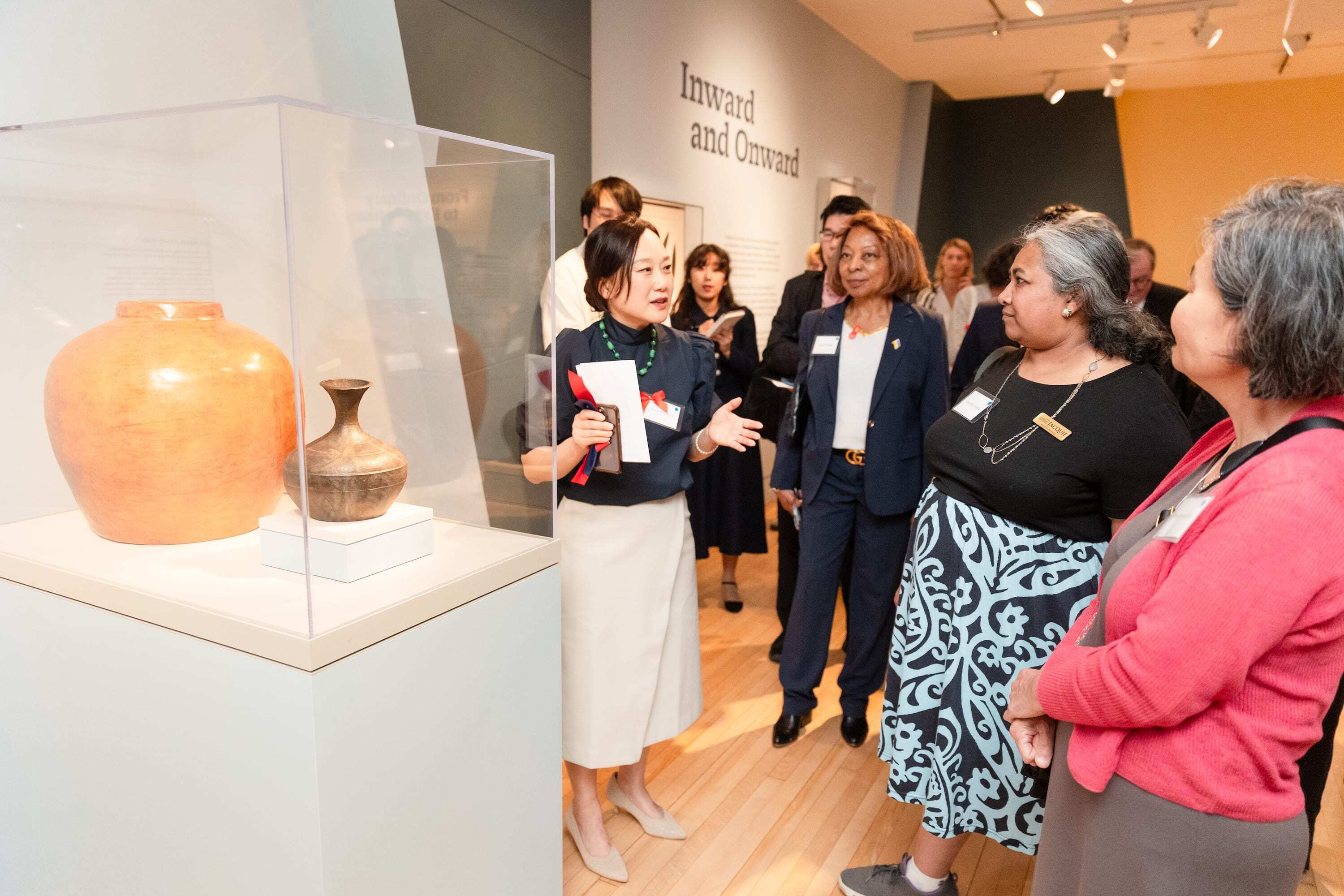
CONNECTED | Jul 22, 2025
Curator Q + A: Behind the scenes of the Yu Kil-Chun Gallery of Korean Art and Culture
In May, PEM opened a landmark installation of the museum’s remarkable Korean Art collection, the Yu Kil-Chun Gallery of Korean Art and Culture. PEM is the oldest continuously operating museum in the United States and one of the first American institutions to collect Korean art. We caught up with Jiyeon Kim, PEM’s Curator of Korean Art, to discuss the complex process of opening this gallery.
Q: Why is PEM's collection of Korean art so significant?
A: PEM's Korean Art collection is special because, first of all, we were one of the first U.S. institutions to collect Korean art and culture. Our collection was formed during a time of great change and transition in Korean history. PEM’s collection also reflects interesting moments of human connection between several Americans and Koreans who formed very special friendships.
Q: How did PEM begin collecting Korean art?
A: Let me start with the story of Yu Kil-Chun, the person the gallery is named after. Yu was a young scholar and official when he first arrived as part of the first Korean delegation to the U.S. After all his colleagues went back home, he decided to remain in Salem to learn more about U.S. culture and systems. He lived in the Salem area for nearly two years. When Yu lived here, he formed a close friendship with Edward Sylvester Morse, the director of the Peabody Academy of Science. Because of this special connection, he donated many of his belongings that he brought from Korea to Morse.
Yu was a reformist scholar who advocated for the modernization of Korea, and perhaps as a symbolic act, as soon as he arrived here, he changed into a Western suit and had his hair cut. He donated all his traditional clothing, even his shoes, to Morse. That's how this first collection of Korean art was formed. Also, Morse, partly because of Yu but also from his own interest in collecting Asian art and culture, imported about 225 objects directly from Korea. Together, these two people contributed to the formation of our foundational collection of Korean art.
Featured image: Curator of Korean Art Jiyeon Kim speaking with guests at the opening reception for PEM’s new Korean Art gallery. Photo by David Tucker.
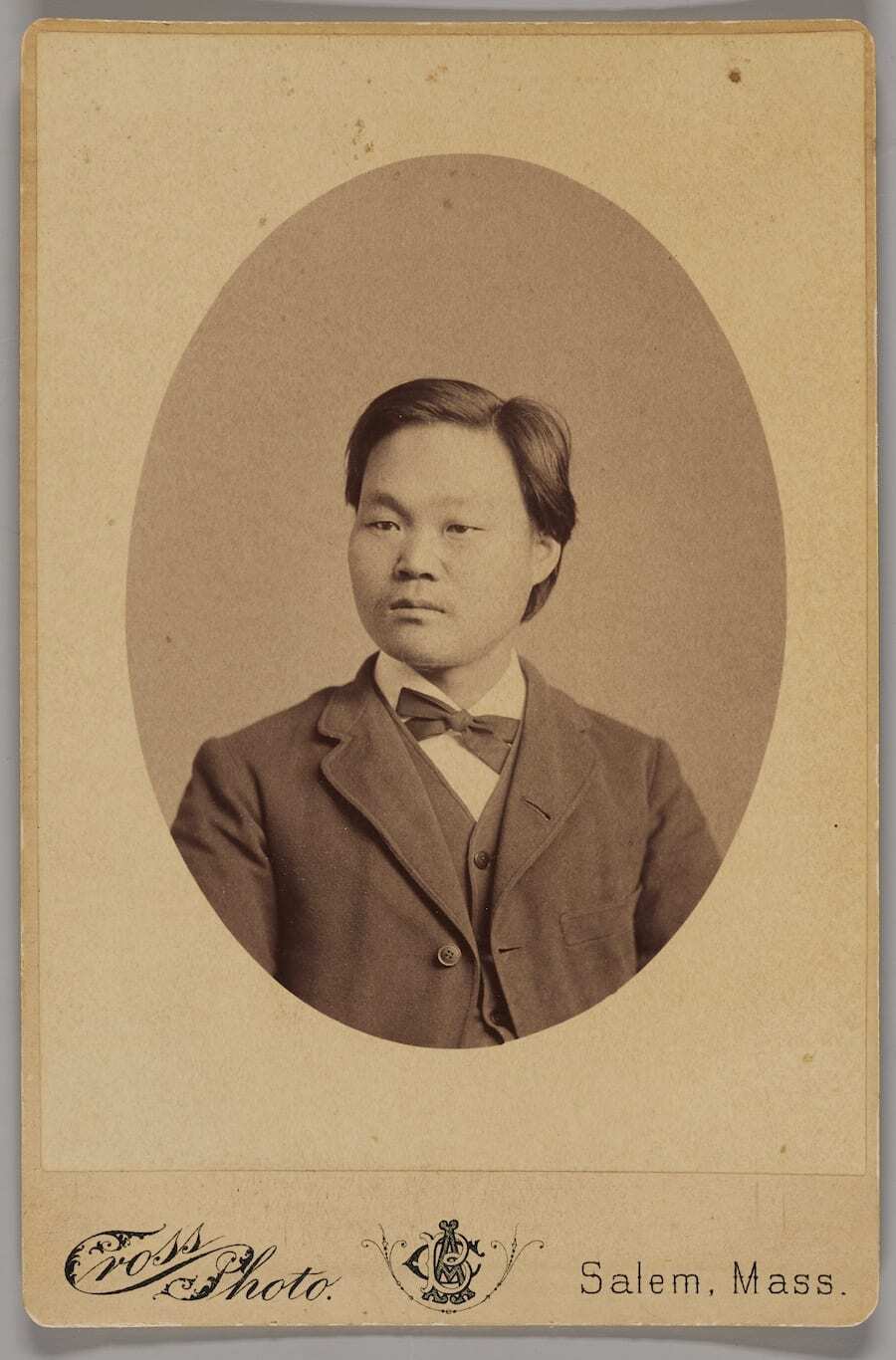
A. B. Cross Photography Studio, Salem, Mass. Portrait of Yu Kil-Chun, 1883–84. Albumen print. PHA 184, box 1, folder 4, item 8. Gift of Edward Sylvester Morse, 1923. Phillips Library, Peabody Essex Museum.
Q: What was happening in Korea when most of these objects were collected?
A: It was certainly a period of great transition and transformation. Yu Kil-Chun came from the kingdom of Joseon, which was the last dynasty of Korea and had been an extremely stable society for a long time. The Joseon Dynasty lasted for 500 years. To Westerners, it was known mostly as a “hermit kingdom,” because it maintained a seclusion policy. But during the period when Yu and Morse were working together, in the late 1800s, the country was forced to open up to the West because of changes in international relations. It was Korea’s first step into a wider world.
Q: How did artists in Korea express the changes that were happening in their country?
A: It was not only a period of great change — it was also a period of real hardship. People suffered a lot from famine, social unrest and government corruption. Still, they continued to make beautiful things and to surround themselves with objects containing their wishes and aspirations, yearning for a happy, safe and fulfilling life. That's how all these beautiful objects in our collection came into being.
Q: What can you tell us about some of the objects on view?
A: You'll see all kinds of objects in the gallery, large and small, ranging from a magnificent eight-panel folding screen to everyday items like thimbles and tools. There are many textiles, paper objects, ornaments, furniture — even armor. There’s a huge variety.
Q: What do these objects tell us about everyday life in Korea?
A: Korea under the Joseon Dynasty was a Confucian society with a strong social hierarchy, but people were also deeply engaged in a wide range of religious and ritual practices. Joseon aesthetics are often known as austere and serene, but there was a great love of bold colors and patterns. Korea during this period was also a deeply family-oriented and community-based society, and many everyday objects reflect those values. One of my favorite examples is the hwarot, a bridal robe. This embroidered wedding robe was once reserved for royal princesses. Over time, it was handed down and shared with many brides outside the palaces. Along the way, it was continuously maintained, repaired, updated and eventually rented out through village rental shops, so all the brides in a village shared one wedding garment. I think it's a powerful symbol of how craftsmanship, creativity and communal support created a shared cultural heritage.
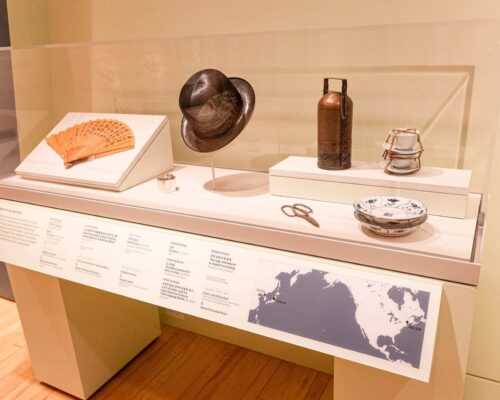
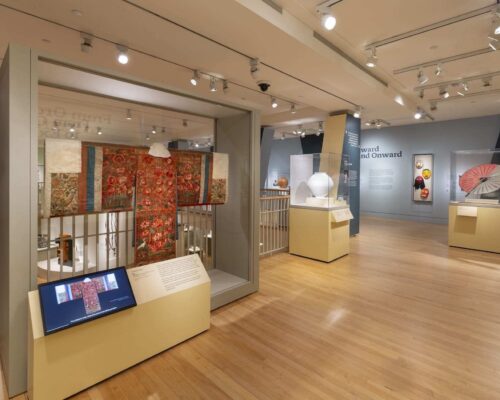
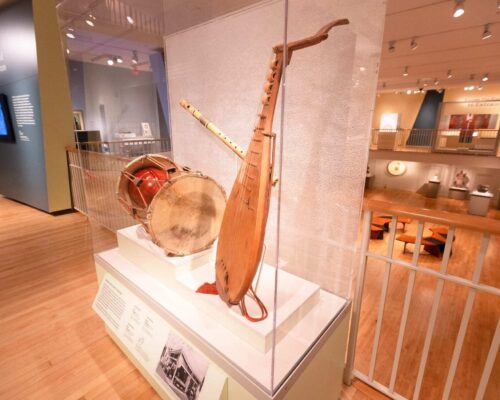
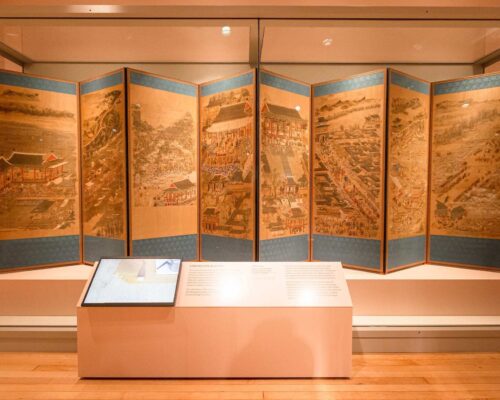
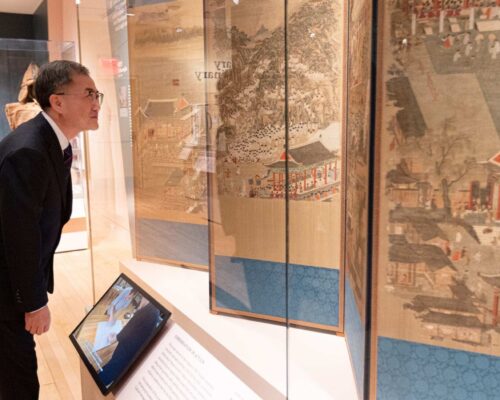
Q: What’s the story behind the musical instruments in this gallery?
A: We have ten musical instruments from the Joseon Dynasty, and they were all played at the World's Columbian Exposition in 1893, held in Chicago. It was the first world's fair that Korea ever participated in. Among the 15 delegates to the fair, 10 were musicians. That shows how much pride the Joseon elites had in their music. The musicians performed in front of the pavilion, and I think that was probably the first time the American public ever listened to Korean music. It's fascinating considering the current popularity of K-pop.
Q: The eight-panel folding screen you mentioned earlier also has a great story behind it. Can you talk about its conservation process?
A: This screen is titled Welcoming Banquet of the Governor of Pyeongan. Even before I came here, it was very well known as a masterpiece of late Joseon Korean painting. Many Korean art historians and museum professionals came to PEM just to see this painting. With the help of Korean government agencies, we were able to send it to Korea, where it was conserved at the Leeum Museum of Art for 16 months by three full-time conservators.
The work they did was amazing. They removed the backing, and repaired and restored the screen to its original format. You can see video footage of them at work in PEM’s gallery. During the conservation process, art historians and specialists also worked to determine the original order of the screen's panels and discovered new historical context and background information. The conservation was not just about restoration, but also about discovering new things and redefining the painting.
Q: What was it like to put this installation together?
A: The first step was to research the collection and launch a wonderful gallery team to come up with the concepts and designs. At the same time, I continuously looked for new additions to enhance the collection. I feel very fortunate, because many key objects in the gallery are actually new acquisitions, including some that came to us unexpectedly. With the design, interpretation, conservation, installation and all these processes, I had so much fun and it was so amazing. And I'm so grateful to our team members who were so dedicated, so creative. I really admire their work ethic and the magical touches that brought all these objects to life.
It's been most exciting to uncover the human stories behind the objects and connect these stories to a coherent narrative in the gallery. After the gallery opened, it was thrilling to see visitors find something familiar in these historical objects and something that made them feel at home. That was a very exciting moment.
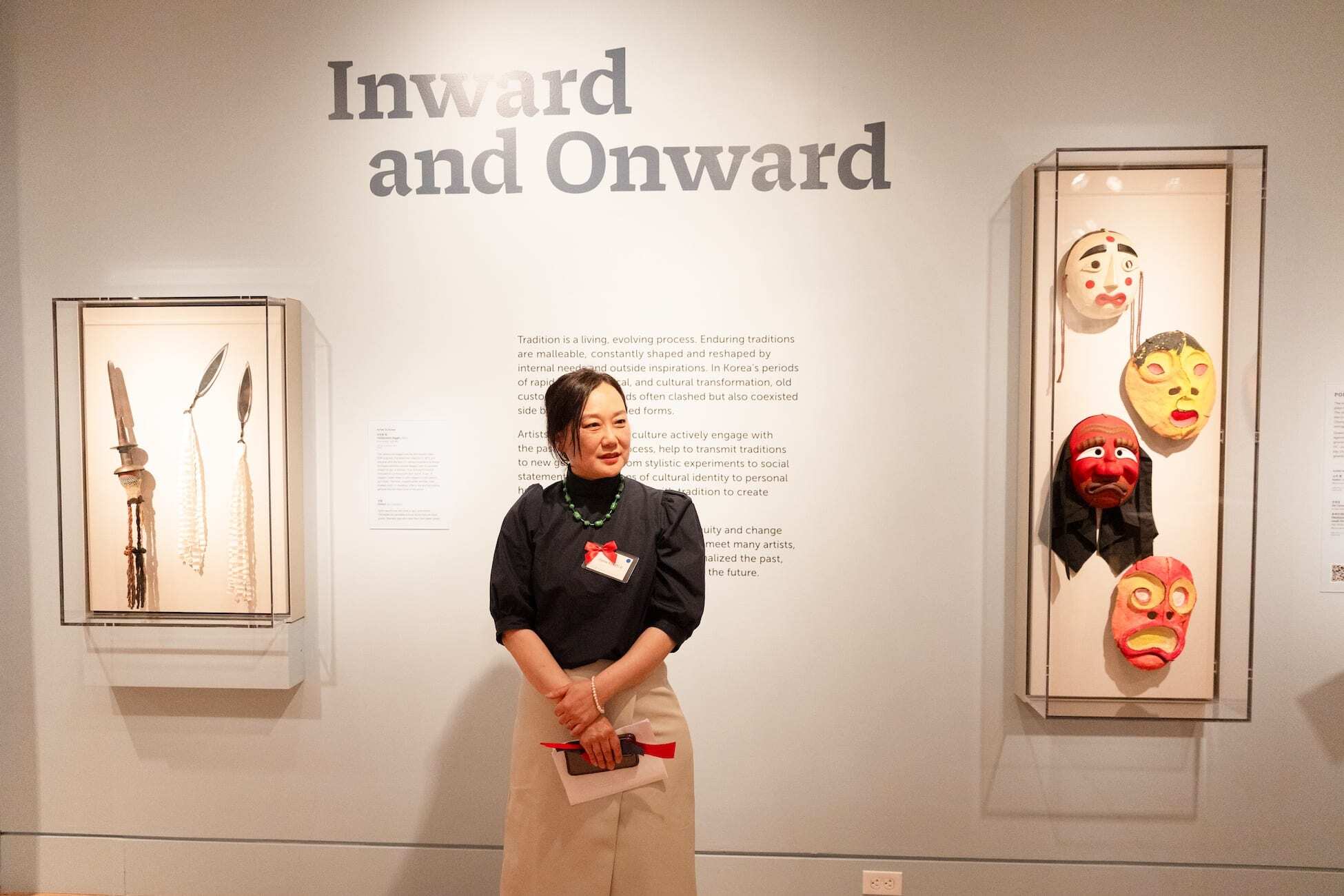
Q: How does this gallery help us grow PEM’s relationship with the Korean community?
A: I believe that this gallery has become not only a vital space for deepening our understanding of Korea, but also a space for Koreans to gather and connect with each other. From the beginning of the project, we collaborated with various Korean government agencies and museum colleagues, but, just as importantly, we've been engaging with more Korean American artists, scholars and community members. What's been incredibly moving is seeing how these people have responded to the stories that we are telling.
I'm personally excited for this gallery because it brings together so many threads: history, art, community, identity. As a curator, it's incredibly fulfilling to see how each object carries its own story, and how those stories resonate with people today. Over the last two years, I’ve met so many wonderful people and built valuable relationships, which I'm looking forward to strengthening and expanding.
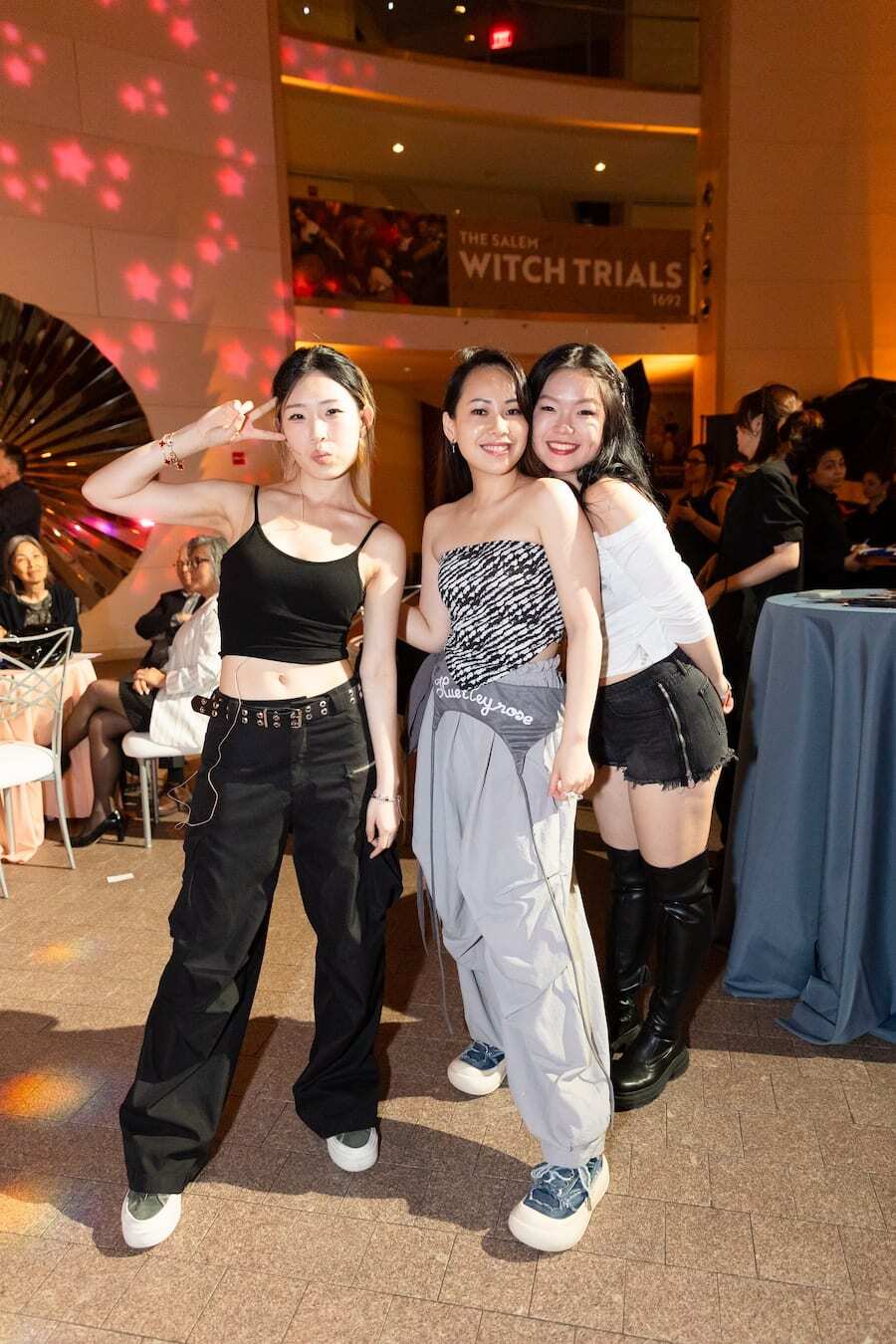
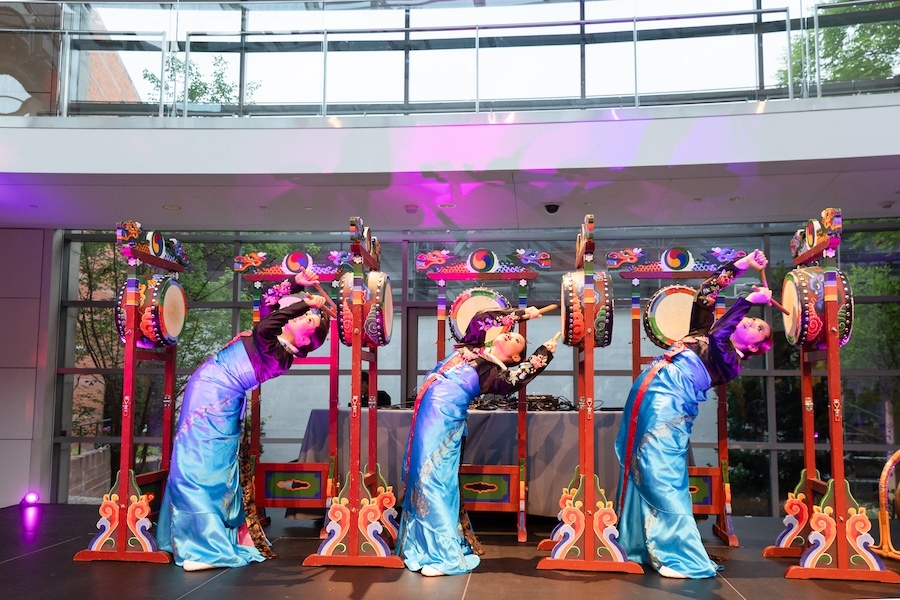
The K-pop Dance Party and traditional dance performances at the opening reception for the Yu Kil-Chun Gallery of Korean Art and Culture, and Jung Yeondoo: Building Dreams exhibition opening, May 15, 2025. Peabody Essex Museum. Photo by David Tucker.
Q: What do you hope people understand about Korean art and culture when they visit?
A: I think Korean art has a unique voice, but I also think it can be shared by everyone. I want people to see that Korean art is not just serene, but also bold, expressive and deeply human. I want people to see that the everyday and transformative can often coexist in a single object, and that behind each object is a story of adaptation and connection. Lastly, I hope this gallery sparks curiosity and a sense of respect for all cultures that continue to endure, adapt and inspire us.
The Yu Kil-Chun Gallery of Korean Art and Culture has been made possible with the support of the Korea Foundation. Generous leadership support is provided by the National Museum of Korea; Samsung Foundation of Culture, Korea; the E. Rhodes and Leona B. Carpenter Foundation; the Overseas Korean Cultural Heritage Foundation; the Henry Luce Foundation; Helen H. Kim and Colin A. Warwick; Maria Kim and Sung-Dae Hong; the Council of Korean Americans, Boston; the Korean American community of New England; the Korean Cultural Center, Washington, D.C.; the Korean American Citizens League of New England; the Korean Cultural Society of Boston; an anonymous donor; Linda Champion; Mrs. Yu Suk Hee; and other generous donors.
Related posts
BLOG
Behind the scenes of a newly commissioned work opening in conjunction with PEM’s Korean Art gallery
8 MIN READ

Blog
Lynda Roscoe Hartigan and Curator Jiyeon Kim chat about PEM’s new gallery of Korean art and culture
4 Min Read

PEMcast
PEMcast 39: Behind the scenes of PEM’s new Yu Kil-Chun Gallery of Korean Art and Culture
36 min listen
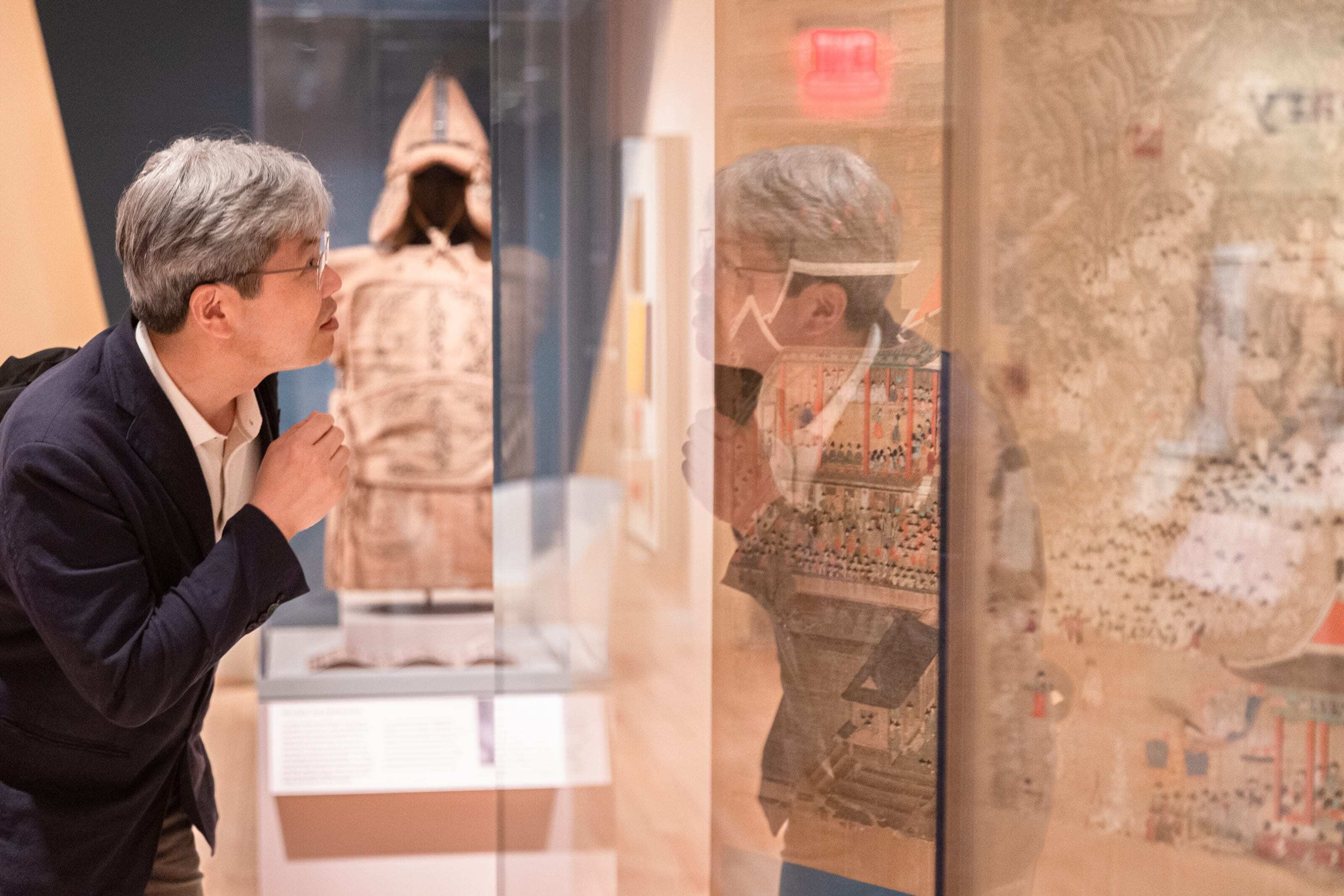
Blog
Korean art and music comes to PEM
5 Min read






